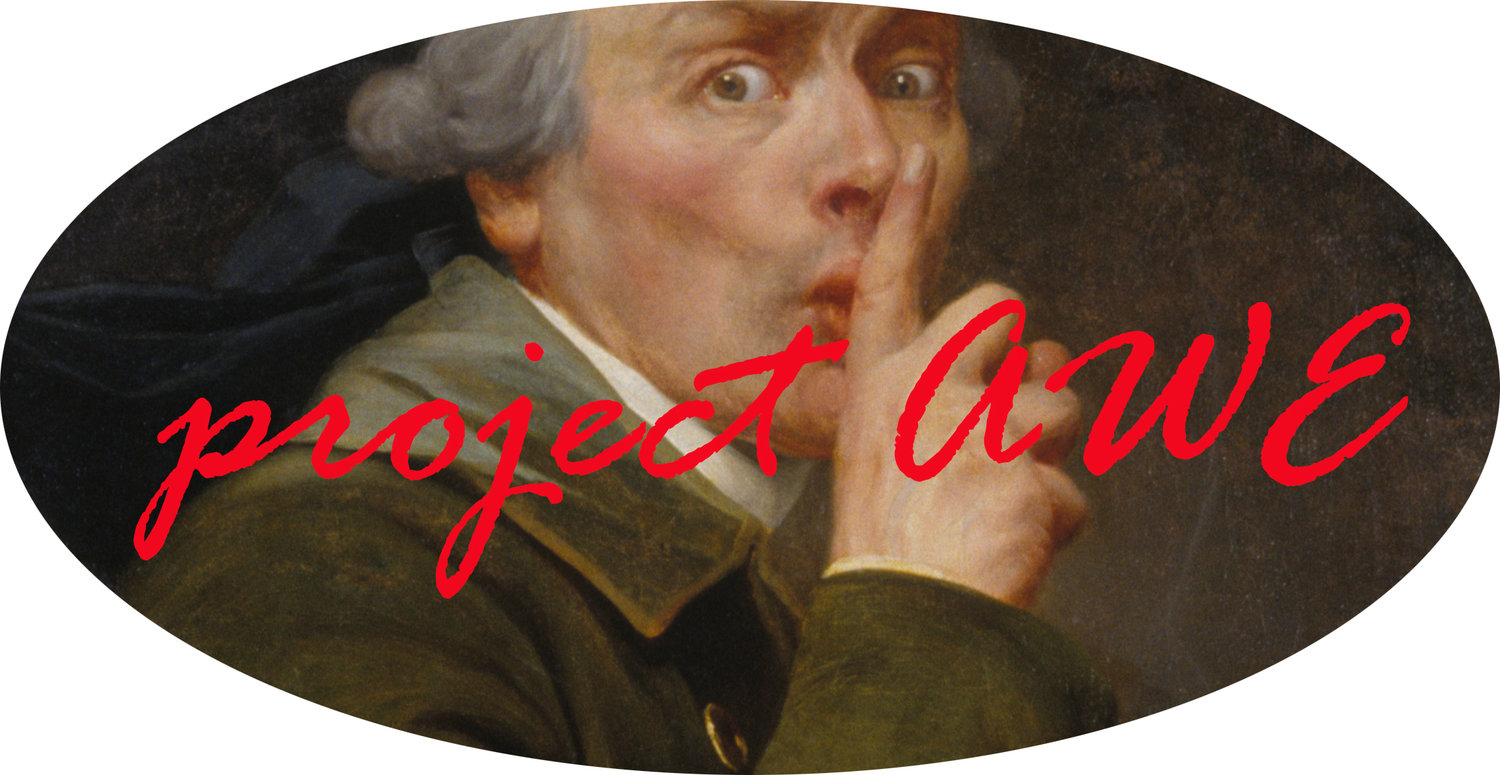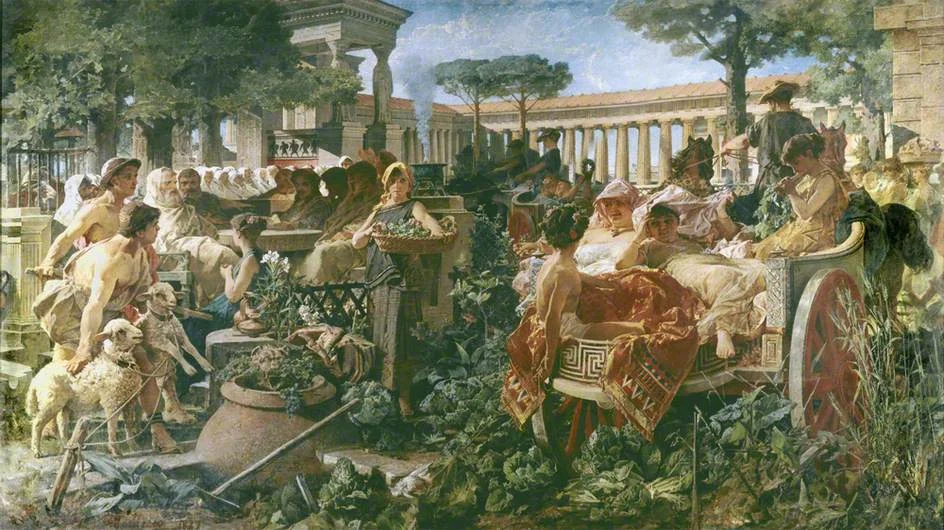by Maria Danova, Independent Scholar
…one can speak about music only with a man
who has perceived the meaning of the cosmos.
—Herman Hesse, The Glass Bead Game
I do not know of any other man
who has been as influential as he was
in the sphere of thought.
—Bertrand Russell about Pythagoras
in A History of Western Philosophy (1945)
“Music conveys a prophetic message revealing a higher form of life towards which mankind evolves” wrote Arnold Schoenberg, a composer with a strong esoteric component to his oeuvre, in his essay on the criteria for the evaluation of music.[1] Due to the peculiarities of musical language which is able to instantly reach the depths of human consciousness, this message can be understood by all men regardless of their own peculiarities.[2]
It has been proven by neuroscientists Marina Korsakova-Kreyn and Oliver Sachs [3] that music affects our brain directly, on the level of neurons—and, if applied properly, it can have a healing, harmonizing effect, bringing to peace both body and soul. Moreover, regardless of our gender, our brain perceives musical melodies as two-, and sometimes three-dimensional objects moving in some imaginary (or real?) space, as if in a certain force field that lies beyond the notions of “common” physics.
Francesco Albani, Mercury and Apollo, 1623-25, Galleria Nazionale d'Arte Antica, Rome
The phenomenon of music unfolds in this mysterious space which is neither here nor there, hovering “between spirit and matter,” in Heine’s words.
Music is like mercury, the mysterious alchemical substance, swift and elusive, serving as a flying messenger between above and below, between space and time, between the spiritual and material levels. Its fabric seems unfathomable, and its ways seem to flee our understanding. However, there once appeared a man who, for the first time in the history of humanity, revealed the crystal-clear mathematical laws underlying not only the seemingly chaotic matter of music, but the whole universe. This made him arguably the most important man in the history of Western music and, some claim, the Occidental culture as a whole, who in fact set the vector of its development for many subsequent ages up until now.
I
His name was Pythagoras—that is, foretold by the Pythia at the Delphian oracle [4], just like many of the greatest heroes of humankind were foretold beforehand by fortune tellers and magi, as part of the archetype of divine birth.
Born in the island of Samos about 584 B.C., he grew up to become a major philosopher, founder of an esoteric brotherhood with several levels of initiation (Dr. Leonid Matsikh in his lecture on Pythagoras points out that it was Pythagoras who really introduced the traditions of brotherhood to the Western realm [5]), a conscious vegetarian, mathematician, geometer, and, most importantly to us, music theorist. He did not stop at the theory, but went as far as to apply music in the most practical ways, using it as an ailment for various diseases and soothing the ill-tempered men by proper musical modes. For he believed that the whole universe is constructed according to musico-mathematical laws, and that the human soul should be in tune with the divine harmony of the world. Through applying instrumental music and chant—both existing in the material realm as part of the musica instrumentalis—it was said he was able to cure the immaterial element of the human being, attuning human soul in concordance with cosmos.
Bust of Pythagoras, Rome, Capitoline Museums, Palazzo Nuovo, Hall of the Philosophers
It was Pythagoras who first introduced the very word, cosmos (in the Greek form, kosmos, initially meaning “order”), along with several other crucial notions that we still use today:
…the Pythagorean vision of the world was so enduring, that it still permeates our thinking, even our vocabulary. The very term "philosophy" is Pythagorean in origin; so is the word "harmony" in its broader sense; and when we call numbers "figures", we talk the jargon of the Brotherhood. The essence and power of that vision lies in its all-embracing, unifying character; it unites religion and science, mathematics and music, medicine and cosmology, body, mind and spirit in an inspired and luminous synthesis. [6]
Upon inventing the word “philosophy,” he “began to characterize himself and his devotees as “philosophers”. These lovers of wisdom (best achieved through attention to the pure godhead of mathematics and to music), were seen as intermediary between the divine and earthly worlds. Pythagoras considered philosophy to be “the highest music.” In turn, he saw mathematics, as the highest philosophy. This meant that Apollo, god of music, could simultaneously be described as the god of philosophy, since according to Pythagoras he was mathematical in essence.” [7]
The story of Pythagoras’ life is shrouded in legends and mysteries (according to one of the legends, he was the Hyperborean Apollo—“Apollo come down from the far north,” as Diogenes writes; according to another source, he was seen as the son of Apollo), which makes him a universal, archetypal, almost mythical figure. He is still venerated not only as the founder of Freemasonry, but also as one of the Masters in the Middle Eastern esoteric Druze faith. What makes him unique is that not only is he remembered as a prophet, “magician,” and “Master,” but also as a scientist who laid the foundations of geometry and mathematics.
Salvator Rosa, Pythagoras and the Fisherman, 1662, Staatliche Museen, Berlin
Curiously, even the name, Pythagoras, is esoteric in its very core, for it contains the three basic sacred vowels of the Sufi and Kabbalah: A, I, O, representing the threefold nature and creative force of God. Comparisons have been drawn between Pythagoras and Christ. For instance, historical records and the Scripture contain a story where they both performed a miracle in front of fishermen, predicting the exact number of fish to be caught in the net (153).
The importance of the number 153 for the esoteric tradition, tracing its use from Egypt and continuing throughout the Greek and, later, Judeo-Christian traditions, cannot be overestimated. Dr. Robert J. Gilbert explains in his article The Hidden Energy Science of Sacred Geometry that the story of a miraculous catch of 153 fish corresponds to the Egyptian symbolic image of "the Baboons of Thoth casting nets into the water, to catch the 'fish' of human souls caught in the 'Net' of the geometric space-time energy matrix. Reference to there being precisely 153 fish caught in the Net (in the Appendix of the Gospel of John) is a direct reference to specific Sacred Geometric numbers taught in the Greek mysteries."
According to Gilbert’s Net hypothesis, the number 153 was ascribed to the so-called Initiates of the Net, a group to which Pythagoras might have belonged. Thus, we can trace a unified esoteric tradition underlying different currents of thought in their succession: the Egyptian, the Greek, and the Christian one—hence the seemingly inexplicable "coincidence" in the stories of Pythagoras and Jesus.
Raphael, The Miraculous Draught of Fishes, 1515-16, National Gallery, London
One of Jesus’ well known symbolic representations is the FISH or ἰχθύς [ikhthýs] in Greek. This symbol directly relates to the number 153, the mystical “number of the fish,” lying in the basis of Vesica Piscis (fish bladder) figure formed by two intersecting circles. 153 is the mathematical ratio of the height of Vesica Piscis to the width across its center, the square root of three which Archimedes famously approximated as 265/153.
Vesica Pisces: the ratio of 265/153
In her essay, Egyptian Numerology: The Pythagorean Triangle and Its Esoteric Meaning, Antonietta Francini writes that it is due to Pythagoras that this mysterious number lies in the foundation of the Western mathematical and architectural tradition:
Most Western mathematical development and architecture derived from Pythagoras’ capacity for a deep understanding of the wisdom of even more ancient cultures. <…> According to his disciple and follower, Plato, the circle and the interaction of two circles, where the center of each circle lies on the circumference of the other (the so-called Vesica Piscis), became the core of all solids. Following this train of thought, Geometry becomes Music, and Music becomes Cosmic Harmony and the Music of the Spheres.
It is not coincidental, that the number 153 is also closely connected to the mathematical symbolism of Apollo, the supreme deity of Music, Harmony, and Order. At the Apollo temple in Delphi stood a sacred Omphaos (Navel) Stone, covered with the relief depicting the sacred all-unifying “energy net.” This net, generated and governed by Apollo, ruled the laws of physical and metaphysical realities—including, and especially, the musical ones.
In light of this connection between musical laws and number 153, it is interesting to note that within the established Western musical system, it is the scale degrees 1, 3 and 5 that form the triad. It constitutes the basic "net" of the tonality: 1 called the tonic, 3 the mediant, and 5 the dominant, the latter tending to resolve back into tonic, thus building a net of sound attraction and repulsion—invisible, but vividly discernible to our perception.
Omphalos (“the navel of the world”), the foundation stone at the Apollo temple in Delphi, Delphi Museum
Another interesting musical aspect of 153 is that the ratio of the Pythagorean comma that is 256/243, gives the result of 1.05349794239, where the first numbers again are, as you can see, the "notorious" 1, 5, and 3 (excluding the zero). Is it this comma —a tiny interval between two en-harmonically equivalent notes such as C and B sharp within the Pythagorean tuning—that had to be done away with during the global temperament reform that led to the formation of the evenly tempered classical music as we know it now.
Christ in Majesty inside a Vesica Piscis figure, Chartres Cathedral: Royal Portal, West Façade, central bay, France
The figure of Pythagoras studying the divine laws of harmony, Chartres Cathedral, Royal Portal, west façade, right doorway tympanum, under the figure of the Virgin inside a Vesica Piscis.
Chartres Cathedral, France, ground plan with Vesica Piscis
It is certainly not a coincidence that in the decorations of this cathedral, with architecture so strongly based on the laws of Sacred Geometry (which is clearly visible in its ground plan), we encounter both Christ, Pythagoras, and the repeated Vesica Piscis symbol united within one magnificent composition of truly cosmic proportions.
Keeping in mind the “fish connection” between Pythagoras and Christ, it should also be mentioned that these two figures, so beautifully combined in the Chartres Cathedral in France (see the two illustrations above), are considered to have a special bond by some branches of Freemasonry. There exists a legend that it was due to having obtained a Pythagorean initiation that Jesus could resurrect himself from the dead.
Iamblichus, biographer of Pythagoras, writes that Pythagoras had an air of divinity since his youthful years—like Christ, too: “After his father's death, though he was still but a youth, his aspect was so venerable, and his habits so temperate that he was honored and even reverenced by elderly men, attracting the attention of all who saw and heard him speak, creating the most profound impression. That is the reason that many plausibly asserted that he was a child of the divinity.” [8]
In addition, he had typical shamanistic traits that can be found in many cultures. Allegedly he had a golden thigh—a token of unearthly descent and superhuman powers often attributed to shamans (Orpheus also had ancient shamanistic qualities) [9]. One of these powers, was said to be the ability to hear the “music of the spheres” produced by celestial bodies. Pythagoras was the first to tell humankind (or at least the Western world) about this phenomenon. This ability was perceived as all the more unique since it was accepted that God “decided not to preserve the diapason of Metamusical transmission for the mortal sentient beings, at least for the time of their stay in this mundane world.” [10] Remarkably, aspiring individuals can still attain this ability to hear divine harmonies, but only through meditative exercise and initiation.
In an esoteric lesson taught in Munich on August 27, 1909, the antroposoph Rudolf Steiner told his disciples of the medieval mysteries of the Holy Grail and Rose Cross, revealing that on an advanced level of development, the initiate (symbolically named Parzival, the innocent one) could hear the music of the spheres with his spiritual hearing (“Then we hear the harmony of the spheres from the geniuses of will that clarifies the goal of man and world evolution”). The next stage was marked by a new perception: the initiate saw his own being in the form of a Pentagram, or the Universal Tree: “The whole picture is the tree of life or man in the form of a pentagram.” [11]
Pythagorean pentagram with five letters forming the word Hygieia (health)
These stages correspond surprisingly well with the exercises practiced in the Pythagorean brotherhood. It is entirely possible that Pythagoras taught his most advanced esoteric disciples to perceive the celestial music, rather than reserving this faculty uniquely for himself. It is known that Pythagoreans used Pentagram, or Pentacle, labeled with the letters U, G, I, EI, A on its points representing the harmony of elements and spirit (the word hugieia means “health”), as a distinctive mark by which his initiates could pass the information from one to another, simply by leaving this sign in a designated place. It seems legitimate to suppose that indeed there exists a perennial tradition of wisdom passed on through centuries via mystery centers and brotherhoods, and that this tradition neither started nor ended with Pythagoras who was but one of its most outstanding Masters.
As the late music historian and theoretician Genrikh Orlov writes in his book "The Tree of Music" (1992), the concept of “the immaterial order which only needs the sound in order to reach the reason via the physical ear, is the dearest treasure of Western music. Being aware of this, we will understand why the number, this most solid basis of order, has become the symbol of the Transcendent in the West.” [12] It was Pythagoras who revealed this treasured concept and presented it to our Western world. It would not even be too bold to claim that it is due to this man, who some thought to be a half-god, that we owe the marvels composed by Bach, Beethoven, Mozart, Haydn, and other sublime composers of the Western tradition.
Giovanni dal Ponte, Seven Liberal Arts, detail: Pythagoras and arithmetic, The Prado Museum
This was his revelation to his contemporaries and descendants: the world is governed by numbers and music, albeit not always available for the human ear to hear. Therefore, one should develop the “ears of the soul” by engaging in speculative music and contemplating upon the sacred mathematical laws lying in the basis of all things. He taught these laws to the inner circle of his disciples, who had to pass a long probation period, lasting for five years, during which they were only allowed to listen to the Master (thus was Pythagoras referred to among his disciples, and hence the phrase Ipse dixit, i.e. “The Master said,” ended any controversies).
“For five whole years they had to keep silence, merely listening to his discourses without seeing him, until they passed an examination, and thenceforward they were admitted to his house and allowed to see him,” writes Diogenes Laertius in Pythagoras’ biography in his Lives of Eminent Philosophers. These disciples on probation were called Auditors. If a person passed this period successfully and demonstrated general good character and prudence, he or she was taken into the Brotherhood and finally admitted into the Esoteric Circle where Pythagoras taught advanced material. Those who did not pass received their belongings back from the common stock and were henceforth considered “dead” by the members of the fraternity.
After the probation was over, the Master revealed himself to the successful students from behind the curtain that had concealed him from their view the entire time, giving all power to the Voice as the best reflection of the Spirit. Finally “they were admitted into the presence of the preceptor, called his companions, and permitted to converse with him freely.” [13] It is hard not to discern the theatrical element in this initiation scheme that was closely bound with ancient Mysteries, where this paradigm of concealment and revelation was incredibly important.
Michele Tedesco, A Pythagorean School Invaded by Sybarites, 1887, Guildhall Art Gallery, The Bridgeman Art Library, London
The complex initiatory system of Pythagoras gained momentum in Italy where he founded his brotherhood. The Pythagoreans even formed a powerful political network based on oligarchy. Their reign was finally overthrown in Kroton, Italy. According to Vladimir Tkachenko-Gildebrandt, a Russian Freemason, Martinism researcher, and translator (born 1964), the cause was the fact that Pythagorean system was initially based on Eastern principles and spirit and was simply rejected by the Greeks. [14]
It took about two thousand years for Pythagoreanism to rise again, now in the form of “Rosicrucian and Masonic fraternities, attaining its perfect form in the Order of Bavarian Illuminati founded by the communistic pantheist Adam Weishaupt, as well as in the Ancient and Accepted Scottish rite of Freemasonry of the USA’s Southern jurisdiction, led by the Gnostic pantheist Albert Pike.”[15] The earliest known document testifying of the origin of Freemasonry from Pythagoras was found in 1696, and, although it is most likely a forgery, it still gives us an idea of how important this ancient sage was and is to the Masonic fraternity. This document is said to have been found by John Locke in the Bodleian library in Oxford in 1696 and “supposed to have been written in about the year 1436” (finally printed in Frankfort as late as 1753—or, as some sources claim, 1748).
This so-called Leland Manuscript is entitled The Mystery of Maconrye and is a transcript of an alleged examination of a mason by King Henry VI. Written in ancient orthography and probably translated directly from French, it mentions the name Pythagoras in a curiously distorted form, Peter Gower:
"Quest. Howe comede ytt yn Engelonde?
Answ. Peter Gower, a Grecian, journyedde ffor kunnynge yn Egypte, and Syria, and yn everyche londe whereas the Venetians hadde plauntedde Maconrye, and wynnynge entraunce yn al Lodges of Maconnes, he lerned muche, and retournedde, and woned yn Grecia Magna wachsynge, and becommynge a myghtye wyseacre, and gratelyche renowned, and her he framed a grate Lodge at Groton and maked many Maconnes, some whereoffe dyd journey yn Fraunce, and maked manye Maconnes, wherefromme, yn processe of tyme, the arte passed in Engelonde."
Modern transcription:
"How came it [Freemasonry] into England?
Pythagoras, a Grecian, traveled to acquire knowledge in Egypt and Syria, and in every other land where the Phenicians had planted masonry; and gaining admittance into all lodges of masons, he learned much, and returned to dwell in Grecia Magna, growing and becoming mighty wise, and greatly renowned. Here he formed a great lodge at Crotona, and made many masons, some of whom traveled to France and there made many more, from whence, in process of time, the art passed into England. [16]"
Pythagoras, line engraving by B. Barloccini after C.C. Perks, 1849
The Pythagorean doctrine has never been written down by the Master himself (it was the Pythagorean Philolaus who made a compilation of the teachings and, notably, sold it to Plato who then used Pythagorean teachings as a basis for his philosophy—see, for instance, his famous cosmological dialogue “Timaeus”), although his biographer Diogenes Laertius claims otherwise, stating that Pythagoras did write some works, but they were simply not preserved. Apparently Pythagoras was in favor of oral transmission of knowledge, and this is only logical, considering the divine status he attributed to sound. Perhaps the absence of written sources also has to do with the highly esoteric nature of his doctrine. As John C. Malone writes, “it is impossible to determine exactly what Pythagoras taught and what his followers contributed. He purposely left no writings and demanded secrecy from his disciples.” [17]
The Pythagorean brotherhood that at one time was very powerful and far-reaching—which ultimately led to their sad demise and overthrow, just like it would happen to the order of the Knights Templar many centuries later—purified and perfected the Orphic teachings, which, in their turn, were the purified form of the Dionysian mystery religion: Dionysus, Orpheus, Pythagoras…
Salvator Rosa, Pythagoras emerging from the underworld, 1662, Kimbell Art Museum, Texas
The legend that Pythagoras descended to the underworld during his lifetime and returned to tell his disciples of the horrors of Hades [18] also gives away traces of Orphism in Pythagoreanism referencing the legendary musician Orpheus' descent to Hades in order to regain his lost love, Eurydice. Additionally, it illustrates the Pythagorean doctrine of rebirth, according to which the soul should wait for its next incarnation in Hades, lest it has become so conscious so as to stop this cycle by the art of remembrance. [19] This story can also be interpreted as a symbolic representation of the initiation that the Pythagoreans-to-be had to pass in their probation period, like the descent in a dark place, perhaps a tomb [20]—the “chamber of probation”—for several days that was practiced in many mystery religions in the ancient world. Other figures—gods and heroes—that are said to have descended into the underworld are: Adonis, Aeneas, Empedokles, Hercules, Kore, Odysseus, and Tammuz.
From cathartic Dionysian feasts to sacred mathematics and science: such was the chain of arcane knowledge in the Ancient Greece that culminated in the foundation of the Pythagorean religious and scientific doctrine, continued by Plato and revived during the Renaissance, surviving up until the present day. As Robert Lawlor justly writes in his book on sacred geometry, “when many ancient cultures chose to examine reality through the metaphors of geometry and music (music being the study of the proportional laws of sound frequency), they were already very close to the position of our most contemporary science.” [21] Even the digital media of our times, to a certain extent, is derived from the Pythagorean concept of number as permeating the whole universe and being the expression of God’s reason.
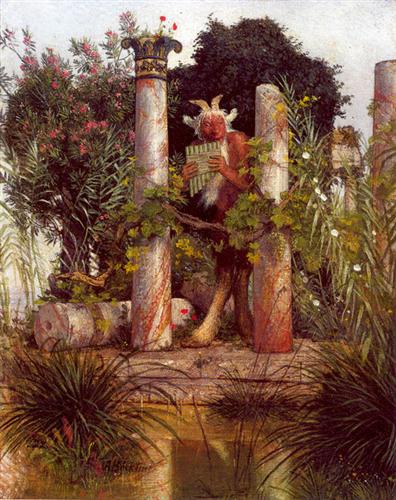

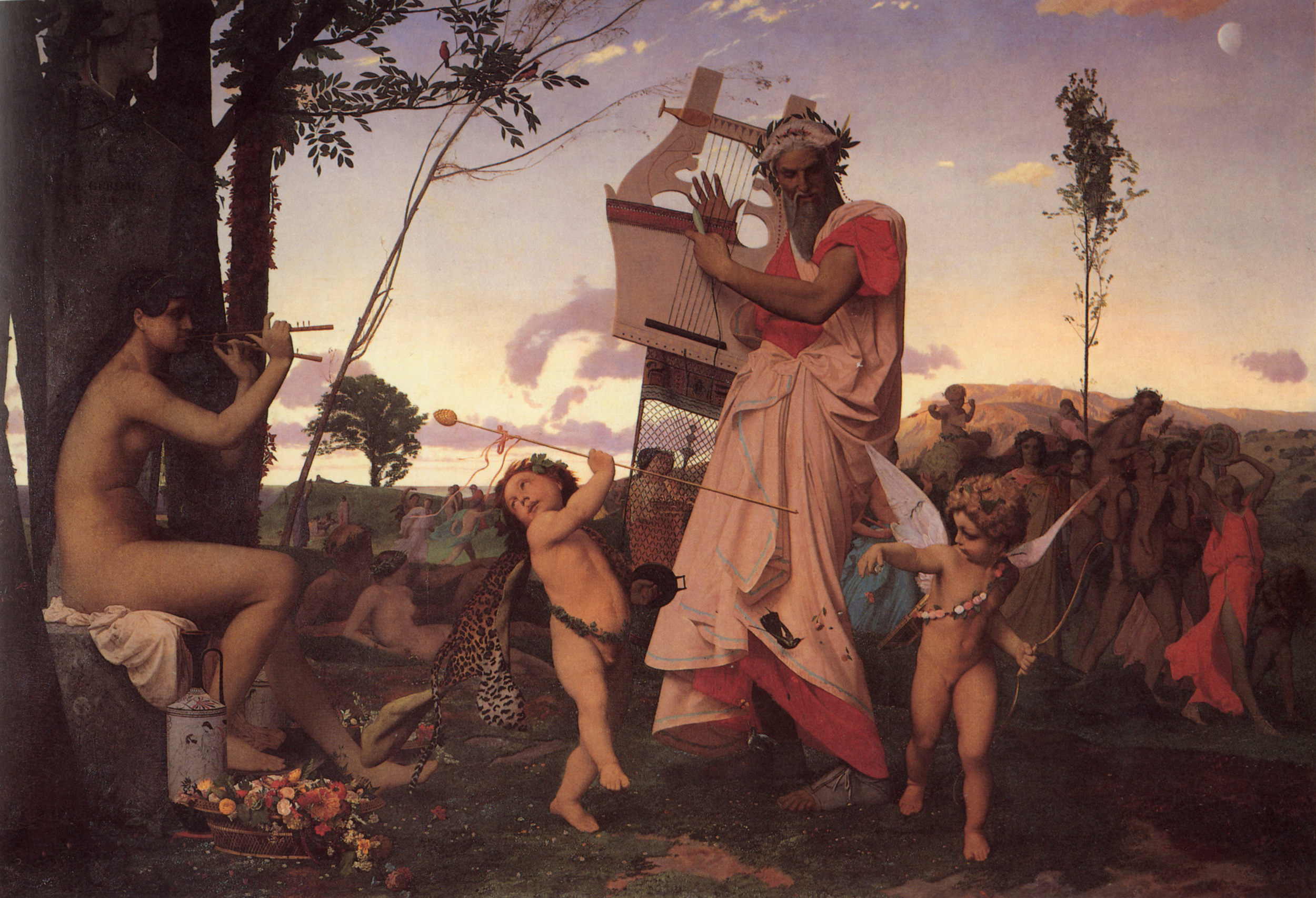



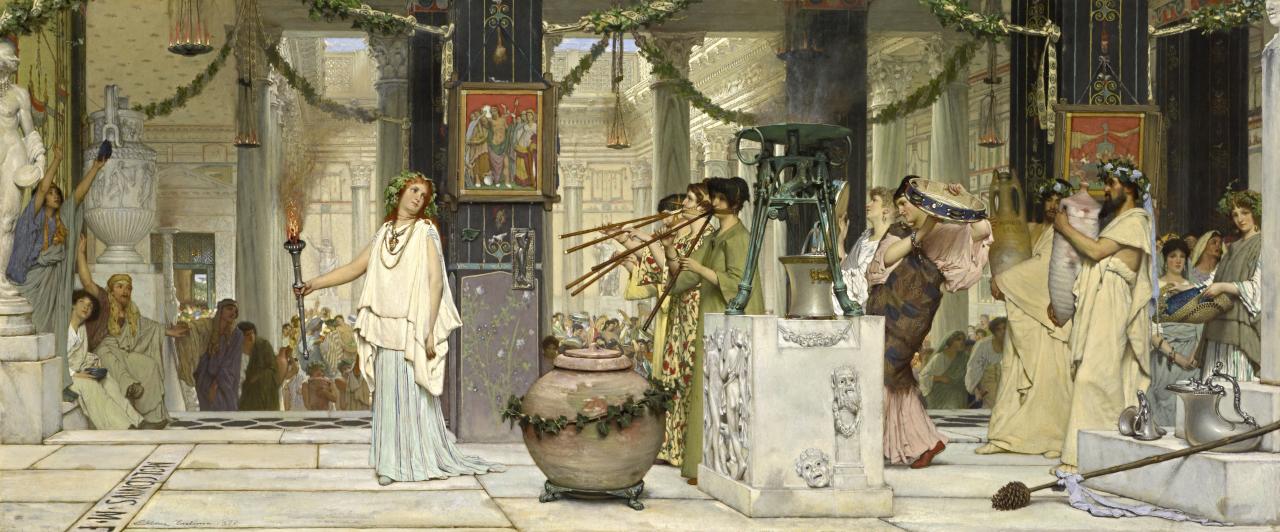
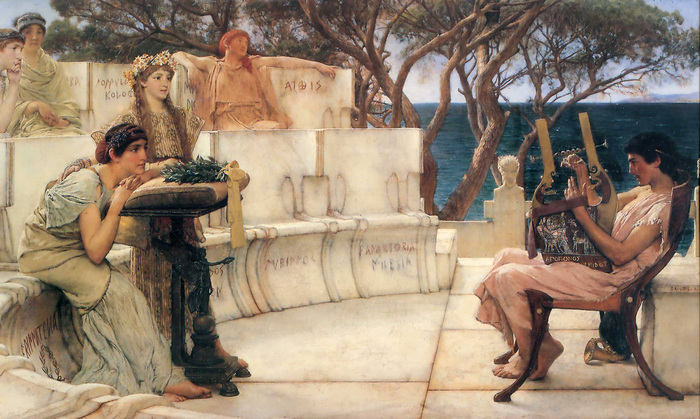
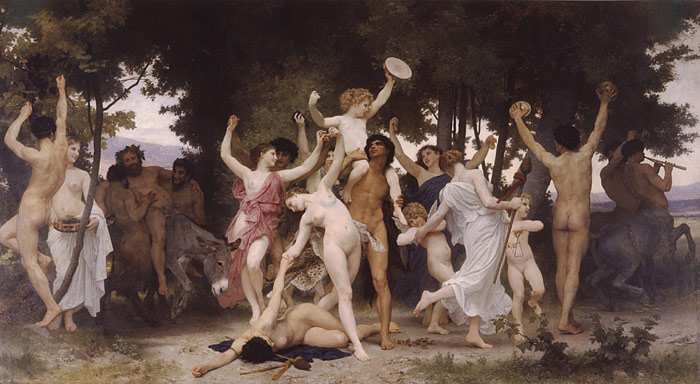
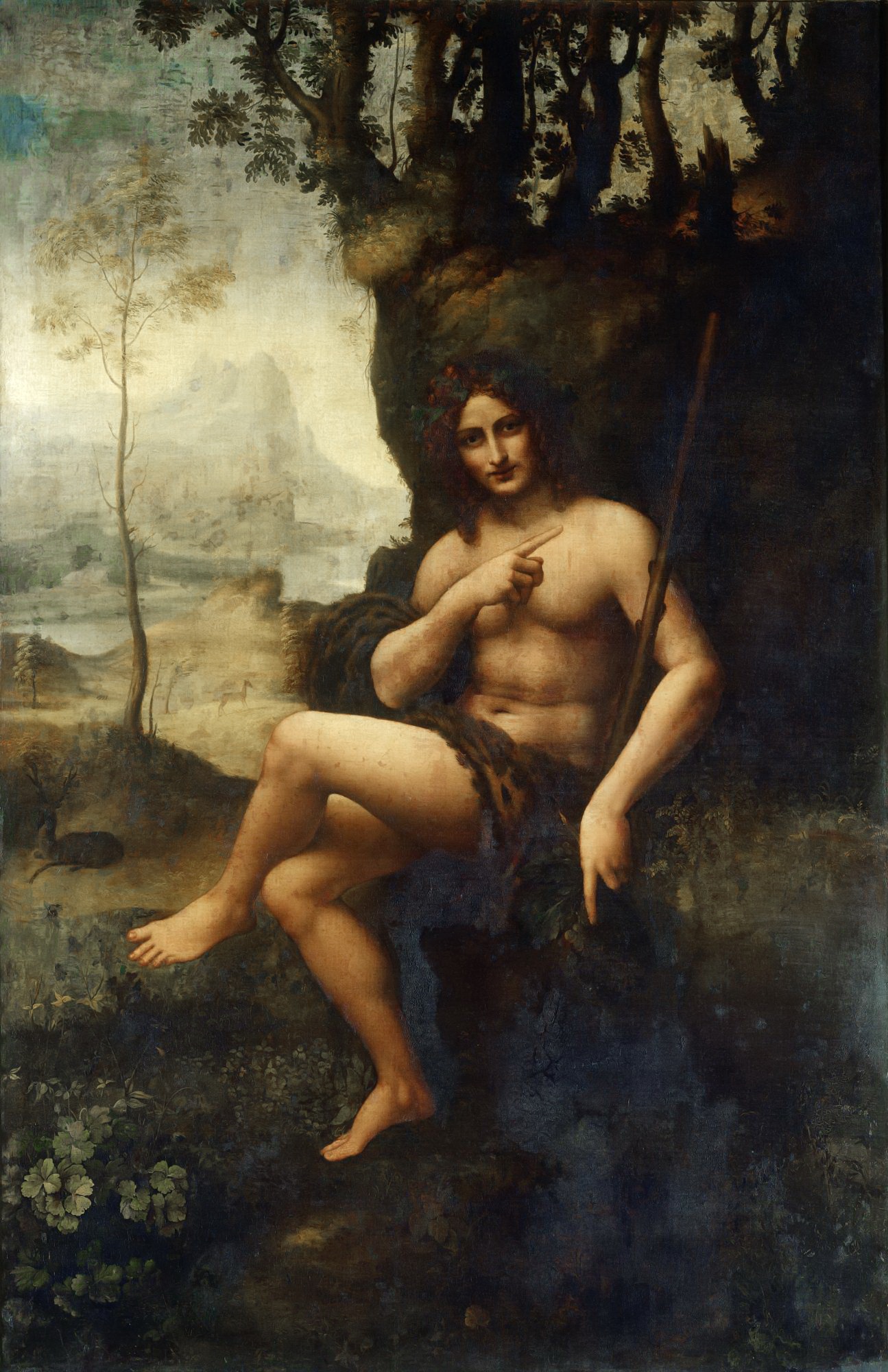
NOTES:
[1] Schoenberg, Arnold. “Criteria for the Evaluation of Music” (1946), Style and Idea, New York: Philosophical Library, 1950: 194
[2] Deaf people, for instance, can have the ability to “see voices,” as if dwelling in the realm of the ideal, speculative music; Beethoven created large-scale sound canvases while being almost fully deaf. Thus, we can draw a natural conclusion that music exists simultaneously on several planes of being, which proves right the ancient idea of the higher “music of the spheres” and the philosopher and musicologist Boethius’ (Rome, c. 480–524 AD) division of music into musica mundane (music of the universe), musica humana (music of the human body and soul), and musica instrumentalis (conventional musical practice, instrumental and vocal music). In Renaissance, the idea of the music of the spheres was taken up by the mathematician and cosmologist Johannes Kepler (Germany, 1571-1630) who was the one who made it truly well-known through his treatise Harmonices Mundi (The Harmony of the World, 1619).
[3] See the research on music cognition by Russian-born Korsakova-Kreyn, PhD in Gognition and Neuroscience, on her website: http://universe-of-music.com/. The famous British-American neurologist Oliver Sacks has published two books on the effects of music on human brain, its perception by humans, and its healing powers: Seeing Voices: A Journey Into the World of the Deaf (1989) and Musicophilia: Tales of Music and the Brain (2007).
[4] Another etymological explanation is given by Diogenes Laertius in Pythagoras’ biography: “Aristippus of Cyrene affirms in his work On the Physicist that he was named Pythagoras because he uttered the truth as infallibly as did the Pythian oracle.” Diogene
[5] Matsikh, Leonid. “Mathematics, Music, and Pythagorean Philosophy.” Lecture given in Russian to a circle of disciples as part of the cycle “The Humanity’s Great Concepts and Books.” Audio recording and transcript courtesy of the website dedicated to Matsikh’s oeuvre www.luckymirror.ru, in Russian.
[6] Koestler, Arthur. The Sleepwalkers. A History of Man’s Changing Vision of the Universe. New York: The Macmillan Company, 1959
[7] Behling, Jacqueline. Pythagoras, the Cult of Apollo, and the Birth of Philosophy. Thesis for the degree of MA in Humanities, California State University, 2000 : 35
[8] Iamblichus’ Life of Pythagoras or Pythagoric Life. Transl. from the Greek by Thomas Taylor. London: J. M. Watkins, 1818, Ch. 2: Youth, Education, Travels
[9] The shamanistic characteristics of Pythagoras are closely discussed in Mircea Eliade’s work A History of Religious Ideas, vol. II, From Gautama Buddha to the Triumph of Christianity, Chapter 22: Orpheus, Pythagoras, and the New Eschatology, transl. W. Trask, Chicago, IL: University of Chicago Press, 1982
[10] Sekatsky, Alexander, Russian philosopher. “The Score of Unheard Music” [Partitura neslyshimoy muzyki], essay in Russian, Neva literary journal, No. 4, 2004.
[11] Steiner, Rudolf. Esoteric lesson [summary]. Munich, August 27, 1909. Source: http://wn.rsarchive.org/Lectures/GA266/English/UNK1998/19090827e01.html
[12] Orlov, Genrikh. The Tree of Music [Drevo muzyki, a volume on various philosophical aspects of music, such as time, space, order, etc.], St.Petersburg-Washington: H.A. Frager & Co, Soviet Composer, 1992; fragments translated from the Russian by me. Genrikh (Henry) Orlov, who was born in Leningrad (now St. Petersburg), USSR and emigrated to the United States in 1976, where he later taught at Cornell University, was an outstanding philosopher of music and an equally outstanding human being. As one of his acquaintances reminisced on the occasion of his death in 2007 (he died in Washington), “he was подтянут, сухощав, always in good shape <….> looked considerably younger than his actual age... Until the end he kept a special radiant gaze.” According to another account, his big green eyes were “luminous.” The linked article in Russian contains a rare photo of Orlov together with his mentor and friend, Soviet musicologist Mikhail Druskin. A brief bio of Orlov in English is to be found here.
[13] Fellows, John. An Exposition of the Mysteries, or Religious Dogmas and Customs of the Ancient Egyptians, Pythagoreans, and Druids. Also: An Inquiry Into the Origin, History, and Purport of Freemasonry. New York, 1835
[14] See Tkachenko-Gildebrandt, Vladimir. “Fabre d’Olivé and the Overcoming of Pythagorean Pantheism” [Fabr d’Olive i preodolenie pifagoreyskogo panteizma], essay in Russian, 2012, source: Theurgia.org
[15] Tkachenko-Gildebrandt, Vladimir. Ibid. Fragment translated by me from Russian.
[16] Fellows, John. An Exposition of the Mysteries, or Religious Dogmas and Customs of the Ancient Egyptians, Pythagoreans, and Druids. Also: An Inquiry into the Origin, History and Purport of Freemasonry, New York, 1835 : 266 ff. The text in old orthography is quoted from the page of the Masonic High Council.
[17] Malone, John C. Psychology: Pythagoras to Present. MIT Press, 2009 : 19. Further, Malone presents a story that demonstrates just how high the level of secrecy was: “The secrecy of the Pythagoreans was legendary and continued long after Pythagoras’ death. In one case, a woman follower named Timycha (ca. 300 BC) bit off her tongue and spat it out at the tyrant Dionysius of Syracuse, Sicily, rather than reveal Pythagorean mysteries.”
[18] On the origin of this legend, which was probably composed long after Pythagoras’ lifetime, see: Jacoby, Felix. Die Fragmente der Griechischen Historiker, Continued. Part IV: Biography and Antiquarian Literature. Ed. G. Schepens. Leiden, Boston, Köln: Brill, 1999 : 265-266. Googlebook
[19] These Orphic and Pythagorean ideas concerning soul’s reincarnation would be later taken up by such giants of Western music and thought as Richard Wagner, who was very strongly influenced by Buddhist beliefs that he discovered through Schopenhauer, and Arnold Schoenberg, whose unfinished oratorium “Jacob’s Ladder” (1915-1917) presents a deeply esoteric, Pythagorean view of the world where human souls keep reincarnating until they finally reach God and turn into His angels.
[20] Diogenes gives the following account of this occurrence, retelling it after Hermippus: “Hermippus gives another anecdote. Pythagoras, on coming to Italy, made a subterranean dwelling and enjoined on his mother to mark and record all that passed, and at what hour, and to send her notes down to him until he should ascend. She did so. Pythagoras some time afterwards came up withered and looking like a skeleton, then went into the assembly and declared he had been down to Hades, and even read out his experiences to them. They were so affected that they wept and wailed and looked upon him as divine, going so far as to send their wives to him in hopes that they would learn some of his doctrines; and so they were called Pythagorean women. Thus far Hermippus.” – Diogenes Laertius, Lives of Eminent Philosophers, transl. R.D. Hicks, Harvard University Press, 1972 (first published 1925) : [41]
[21] Lawlor, Robert. Sacred Geometry: Philosophy and Practice. From a series of seminars for Lindisfarne Association. London: Thames & Hudson, 2002 : 5
The Ancient Greek Seikilos Epitaph is the oldest surviving example of a complete musical composition, including both notation and words:
While you live, shine,
Have no grief at all,
Life exists only for a short while,
And time demands its toll.
DANIELA BATTISTI voice & cymbals, live recording, 2009, Biblioteca San Giovanni, Pesaro Italy
